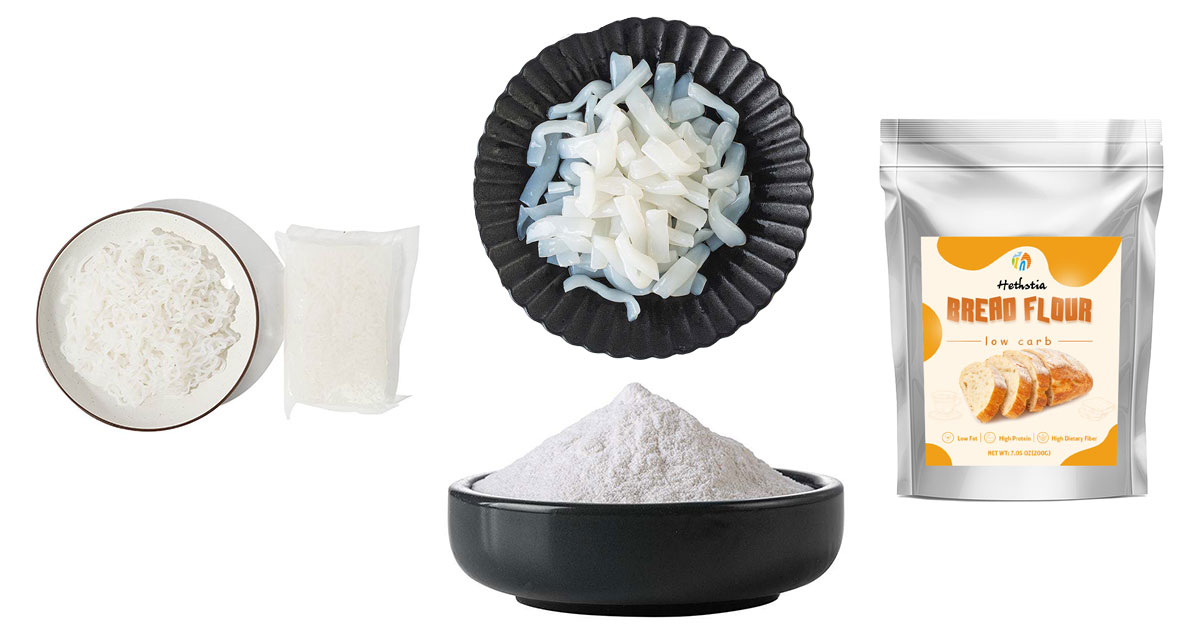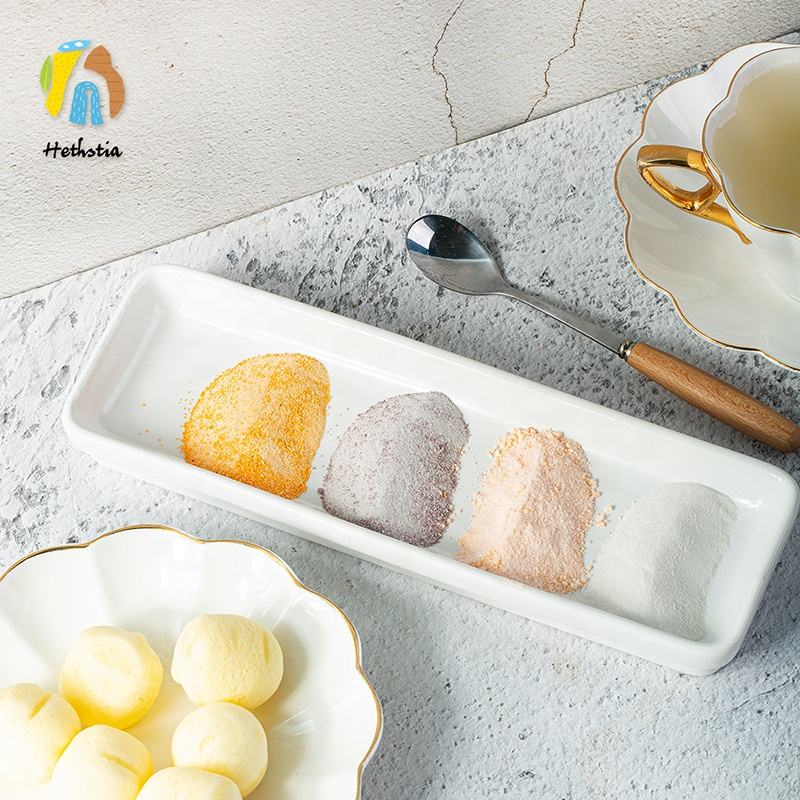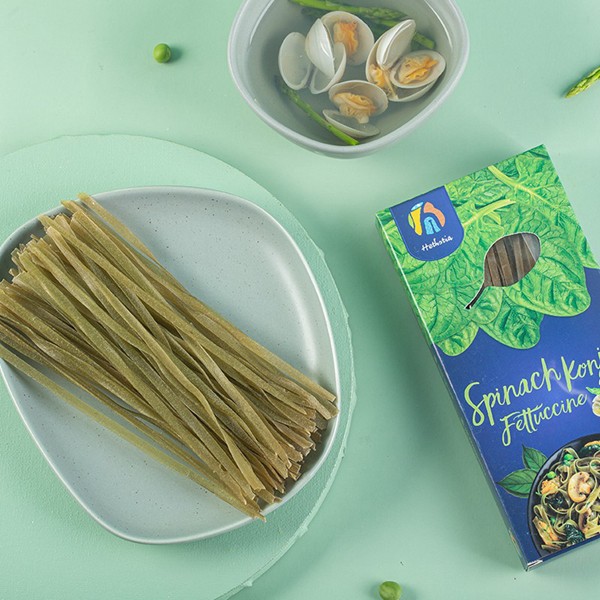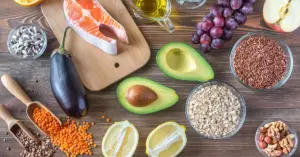How to make Konjac flour?
1. Will be dug out of the konjac, remove the bulb on the fibrous roots and small balls, into baskets, placed in running water, feet in shoes, or with a wooden stick constantly stirring and friction, remove the black skin, and then with a bamboo knife or steel knife (avoid iron knife) scrape the black skin.
Cut into 2.3 ~ 2.6 cm thick, 3.3 cm wide square or triangular konjac slices, and immediately put into the water to soak for 2 ~ 3 days, so that the alkaloids are dissolved in the water to avoid poisoning.
2. Change the water 2 to 3 times a day during soaking. After soaking, bake over a high charcoal fire. Add enough charcoal at one time to avoid adding charcoal midway to prevent a sudden drop in temperature.
3. According to the amount of konjac 1.5%, sulfur powder is sprinkled on the charcoal fire, to improve the whiteness of taro chips. Charcoal fire can not take smoke fire, so as not to smoke black taro chips, reduce quality. Bake to three or four into dry, take out the sun, that is, dry konjac chips.
4. The dried konjac chips were refined into konjac powder glucomannan crystal particles by grinding, wind selection, and other processes.
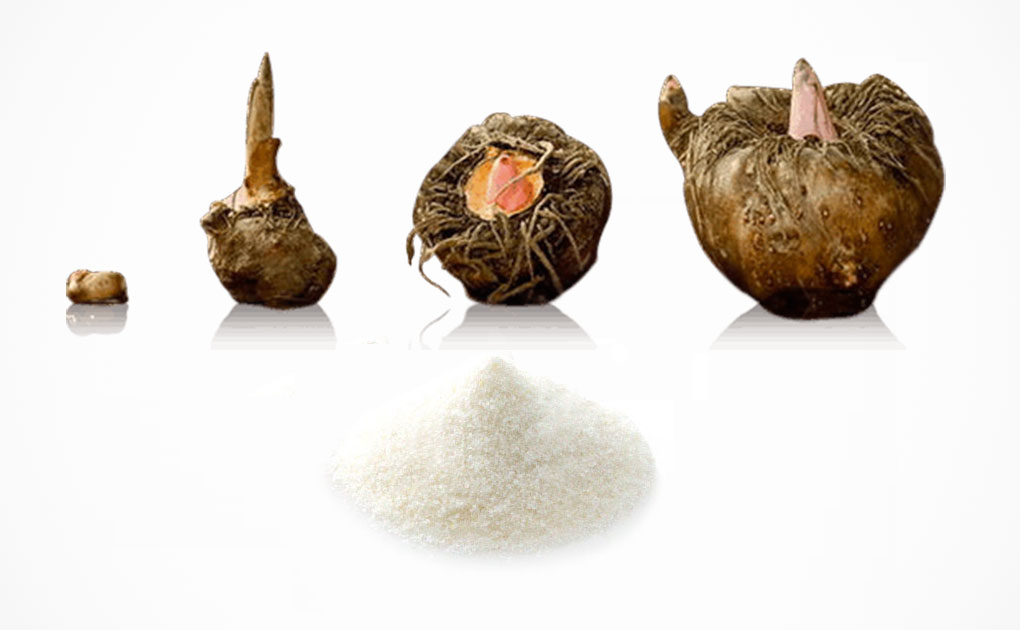
Konjac Products Use
The konjac flour paste with water to become transparent, colorless, tasteless dextrin, added to grain food, can increase its viscosity, elasticity, and stretch, strong water absorption, color, taste, water retention, freshness, and storage resistance.
It is lower cost and better than adding other vegetable protein, egg protein, and starch.
1.Konjac Noodles: Konjac flour is pasted with water at the ratio of 0.2% by weight of flour, added to the flour kneaded into a noodle billet, and then processed into noodles by the conventional method.
Adding konjac flour noodles whitening color, long cooking does not rot, not muddy soup, without breaking the strip, the texture is smooth and soft.
Cooked noodles in the water for 1 day can still maintain the original shape, not scattered not mud, and back to the pot taste as before.
2. Konjac bread: 0.1% by weight of flour, konjac flour paste into a dextrin, added to the flour and other ingredients mixed fermentation made.
Konjac flour added to the bread in the main role is to keep it warm, and soft, bonding, improve the bread’s puffiness, and increase its volume and elasticity.
It is softer and more appetizing than general bread, and it does not dry out and slag off when eating, and the time of water retention and freshness preservation is more than double than that of general bread. It can improve the quality and grade of bread made of common flour.
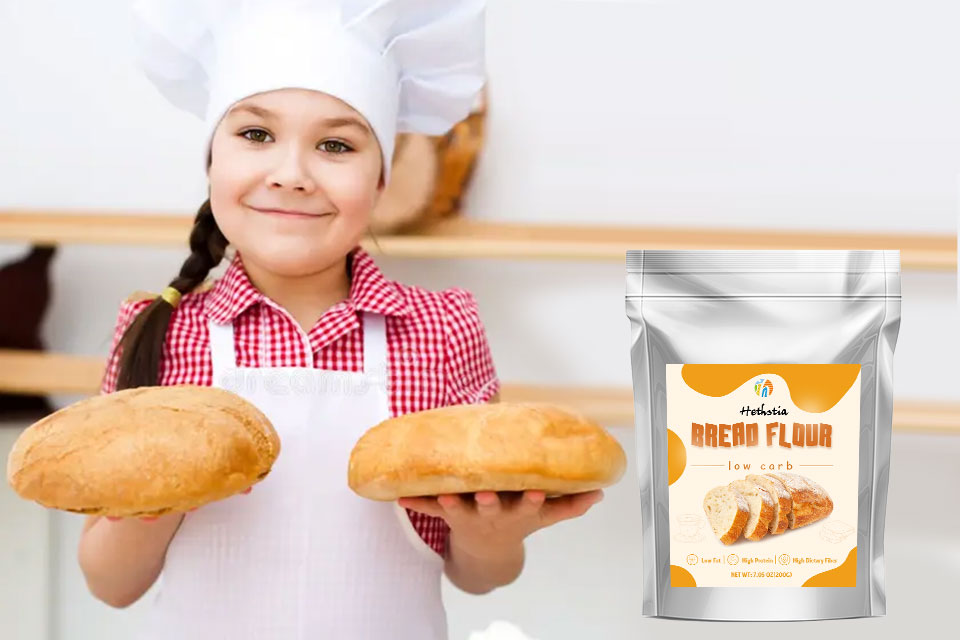
3.Konjac cake: In the production of cake adding konjac flour, can make the cake good water retention, elasticity, toughness enhancement, and volume increase.
When eaten, the texture is delicate and delicious, without slagging. Usually more than four days longer than ordinary cake storage time, so the quality of the cake greatly improved.
4.Konjac vermicelli: Vermicelli raw materials used in soybean meal, corn flour, sweet potato flour, rice flour, and so on.
In addition to soybean meal vermicelli quality is better, with other raw materials produced by the vermicelli are different degrees of color black, easy to muddy soup, broken, not boil, easy to mud, transportation, moving in the easy to break the shortcomings.
To change the shortcomings of the quality of the finished product, adding konjac flour is a very effective measure.
A certain proportion of konjac flour paste after adding different raw materials, according to the conventional production process can be produced by the production of white, boil-resistant, not muddy soup, not easy to break the strip for a long time to put not mud, edible taste delicate, pliable finished product.
Dry vermicelli storage (can be stored for more than half a year), handling resistance, and quality than not adding konjac flour vermicelli greatly improved.
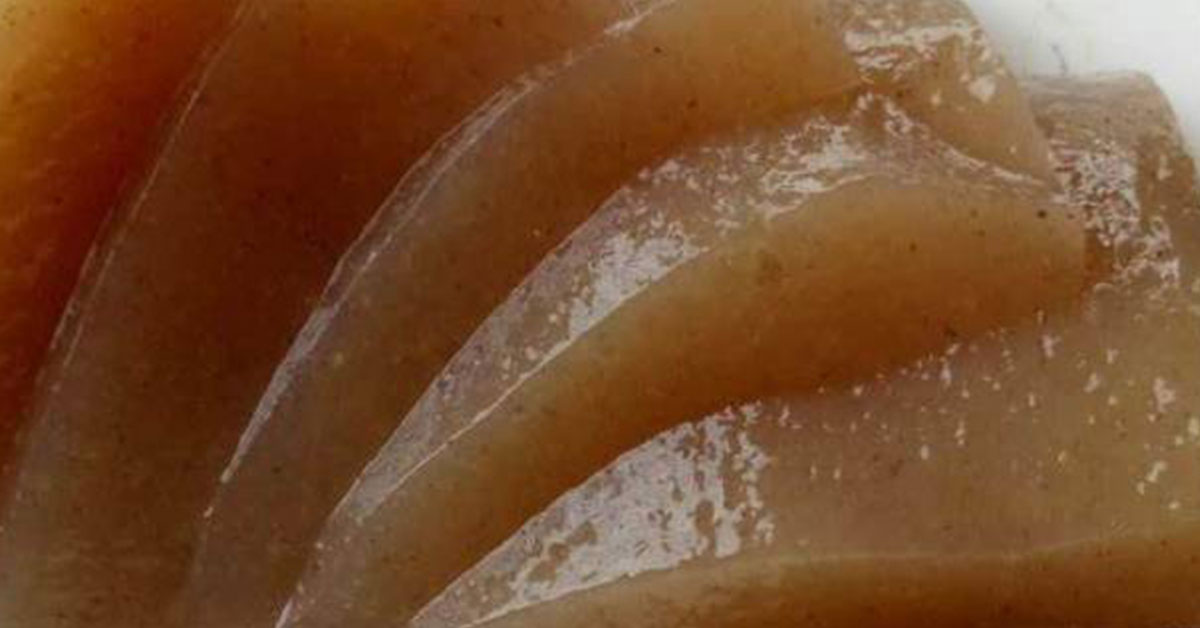
5.Konjac tofu: Konjac tofu is based on the ordinary tofu-added konjac flour made of new tofu. It is stronger than the general toughness of the tofu, has good water retention, is not easy to break apart, delicate taste, white appearance, and cooking flavor absorption.
Konjac tofu made of dried beans, bean threads, vegetarian chicken, protein meat, and other foods closer to the flavor of meat food, but also added to the human body is beneficial to the semi-fluid fiber, to make up for the lack of plant protein.
The method is.
(1)The konjac flour according to the tofu production volume (dry weight of raw materials) is 1:0.1% of the ratio of weighing well, with warm water paste standby.
(2)According to the conventional method of making tofu soaking beans, grinding, and filtering.
(3) Add konjac dextrin to soybean milk in proportion before boiling and mix well.
(4)Boil the soymilk stirring evenly, point brine, and mold on the box.
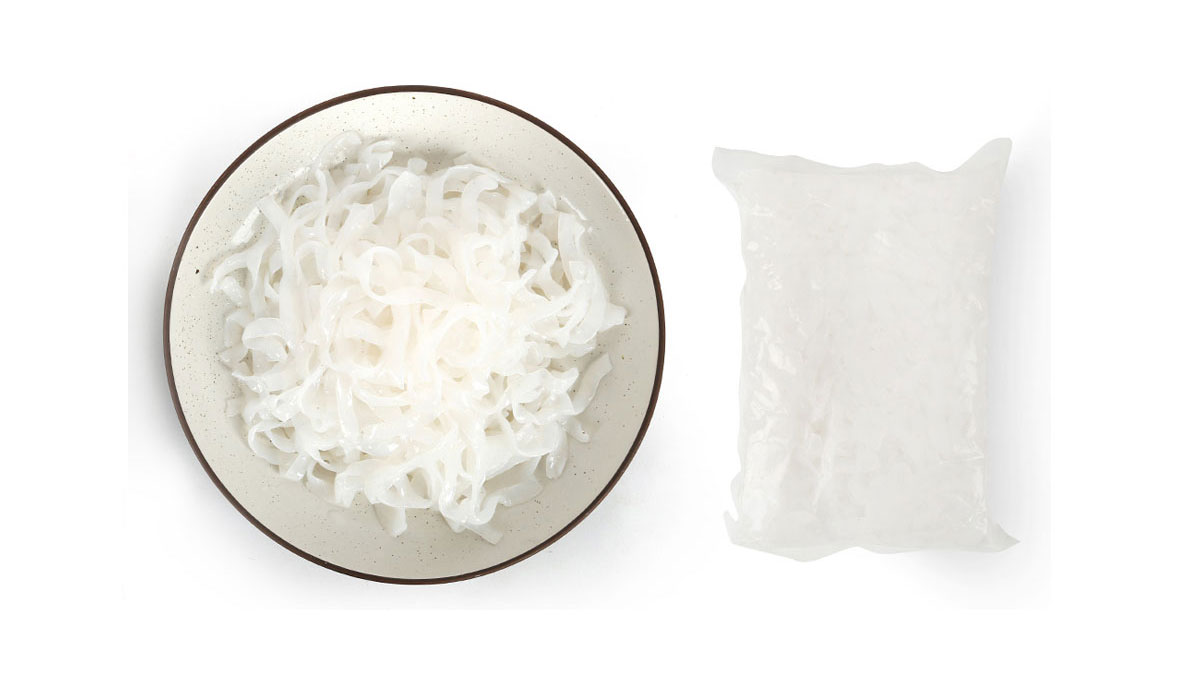
Konjac flour soybean noodles
The thick noodles made from soybeans and konjac flour have a Saikwan (Japanese) flavor and are thin and thin like noodles, with a cool texture that can be eaten straight away like Chinese cold noodles.
Raw material formula: Konjac flour 20 kg, 20 kg of soybeans, lime water in the right amount of salt, spices, seasonings, and food coloring a little.
Konjac flour soybean noodles production method
1.20 kg of soybeans soaked in 100 liters of water (10 ℃), soaked for 12 hours to make the soybean puffed up and pounded into mud.
Then the mud will be filtered to obtain soybean milk, 600 liters of soybean milk into a vat and other containers, and 20 kg of konjac flour.
This mixed solution with a 60 rpm mixer stirred vigorously for 15 minutes to become a viscous mixture of paste.
2.The paste mixture is then left to mature in a container for one and a half hours. An average of 0.08 parts by weight of a lime water solution containing 0.023% by weight is added to each part by weight of the mixed paste and mixed rapidly.
3.The mixed paste made above is placed in a noodle-making apparatus and heated at 70°C for 30 minutes, and then cut into noodles 1.2 mm thick, 7 mm wide, and 30 mm long using a noodle-cutting machine.
4.Salt, spices, seasonings, colorings, etc. can be added to make it colorful and tasty as needed.
Product features: This konjac soybean noodles, due to the large amount of soy protein, glucose, and calcium, can be used as a beauty food, and the role of alkalizing the blood, is the ideal food for people with hypertension and obesity.
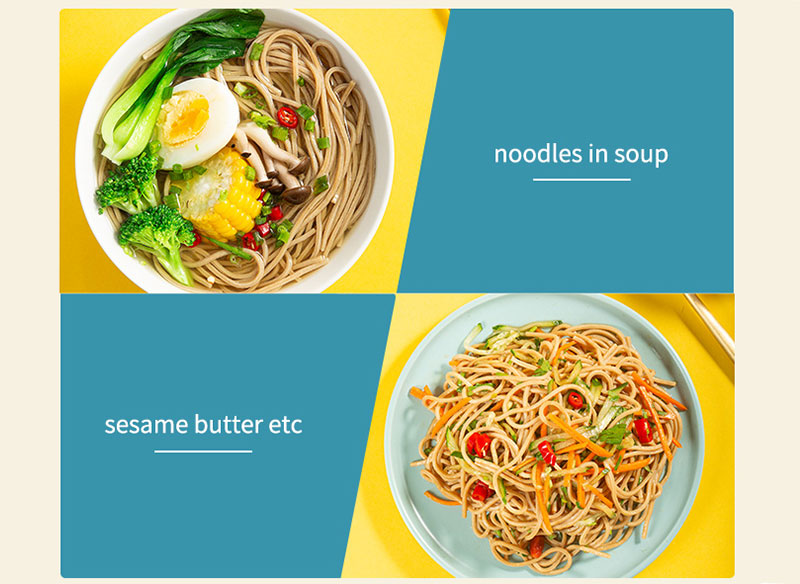
Weight loss stick shaped konjac
Raw material formula: 1 kg of konjac silk, 2% (weight) malic acid solution of about 1 liter, 0.1% (weight) glucomannan solution of 100 ml.
Production method
1. Crush the Konjac silk with a diameter of 5 mm with a roller mill, and soak them in malic acid solution at 40°C for 24 hours to make a paste.
2. Remove the supernatant with a decanter, and wash the decanter with distilled water 3 times, through the mixer and glucomannan solution mixed.
3. Then, it was made into a bar-shaped food product with a diameter of 5 millimeters and a length of 30 centimeters by an extruder.
4. This food is then freeze-dried directly or alkalized as required.
Product features: This konjac food has almost no calories, good rehydration, with the prevention of obesity, promotes insulin secretion, and lowers cholesterol effect.

FAQ
What is konjac flour made from
Konjac flour is made from the tubers or roots of the konjac plant (Amorphophallus konjac), which is also known as the elephant yam or devil’s tongue.
Can you make bread from konjac flour
Yes, it is possible to make bread using konjac flour, though it is not a common or traditional use of the ingredient. While it is technically possible to make bread using konjac flour, it requires significant recipe adjustments and modifications to achieve an enjoyable bread-like texture and flavor.
Where to buy konjac flour?
If you are in North America, you can go to our Amazon online store to purchase. Or contact us by email to help you purchase.
Is konjac soluble or insoluble fibre?
Yes, Konjac flour, which is derived from the Konjac plant, contains a type of soluble dietary fiber called glucomannan.

